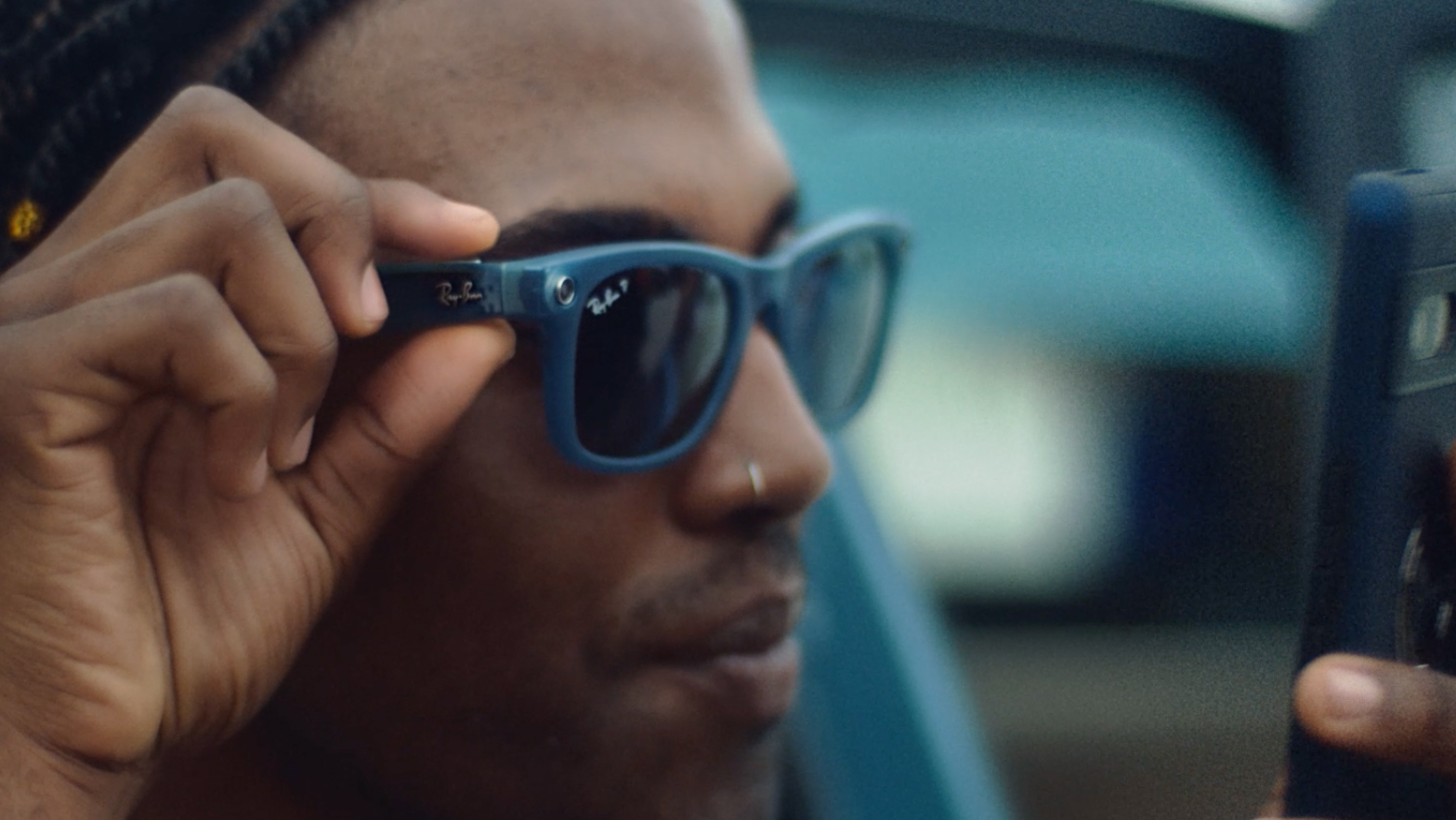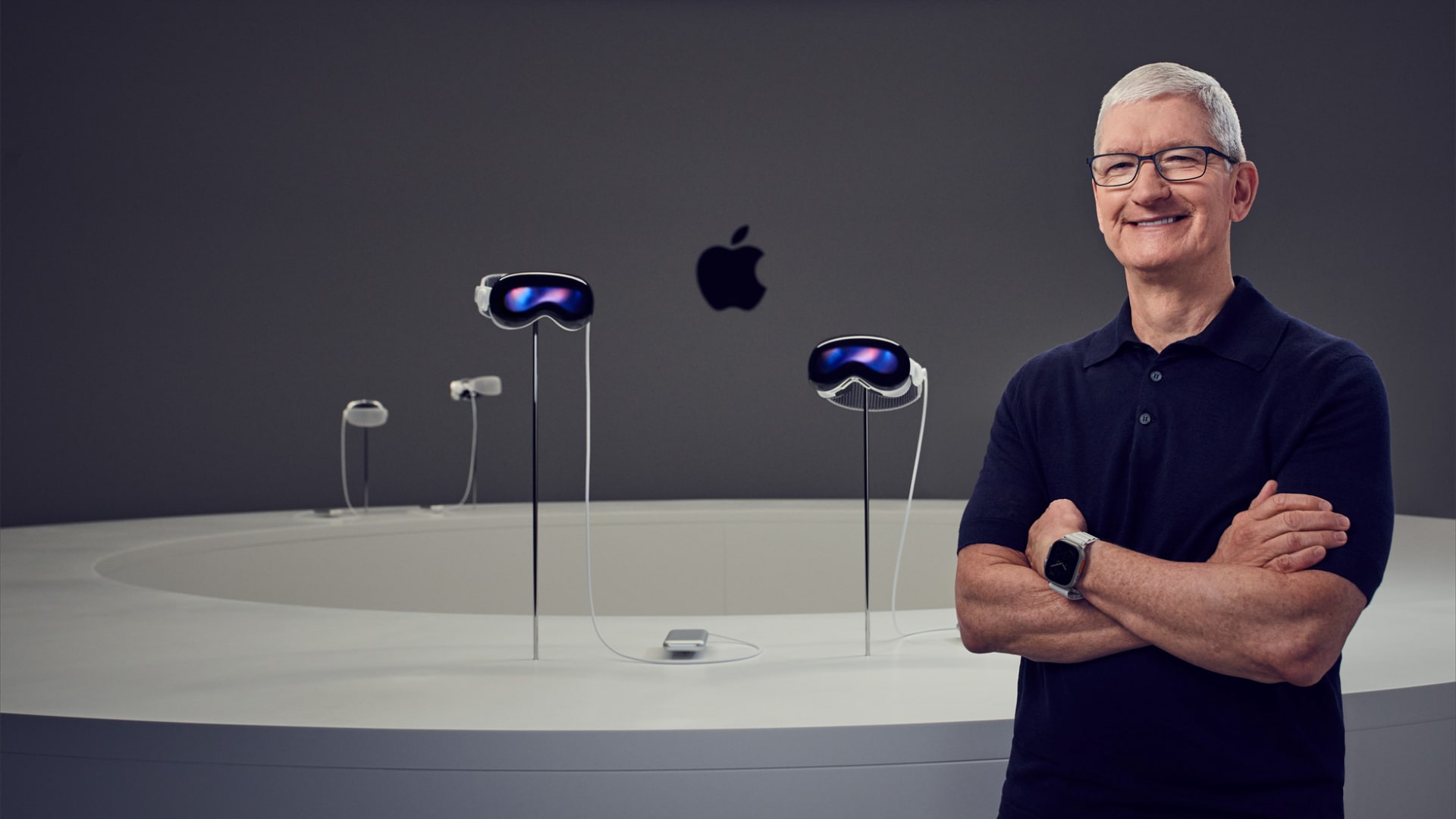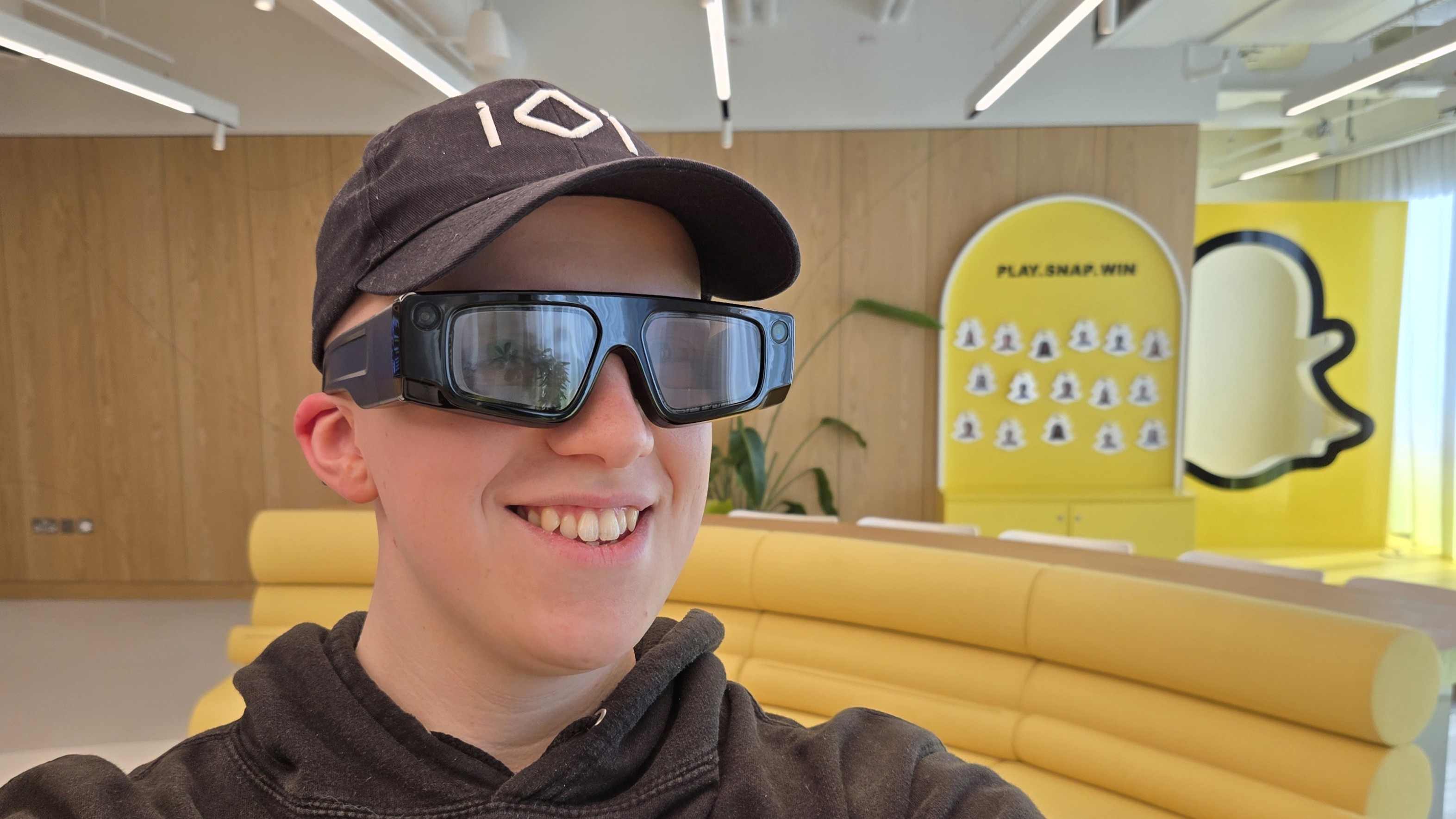Google’s surprise Android XR glasses tipped to land in 2026 – and my only complaint is they aren’t launching sooner
Apple is preparing some AR tech too

- Google revealed prototype AR glasses at TED
- Those glasses are apparently being made by Samsung under Android XR
- The AR glasses are reportedly set to release in 2026
The Ray-Ban Meta smart glasses have been a wild success for Meta, and it appears that Samsung and Apple have taken notice as the duo plans to launch their own Android XR and Apple XR glasses.
We got our first peek at the Android XR glasses last week during a TED talk hosted by Google's head of augmented reality and extended reality, Shahram Izadi.
The specs are a significantly smaller package than the Project Moohan Android XR headset Google and Samsung are collaborating on (via Axios) – and you can see the headset behind him on a shelf to get some sense of the size difference.
In the surprise demo, Izadi used the glasses to perform a few tasks including live translation from Farsi to English, scanning a book using its in-built cameras, and helping them find their keys using a feature called ‘Memory.’ They also pack in a display so the wearer can receive information visually, not just via audio cues.

Now The Korea Economic Daily is claiming this prototype is Samsung-made under the duo’s existing Android XR partnership – and it’s slated to launch next year.
While leaks should be taken with a pinch of salt we’ve heard plenty of reports that Meta plans to launch its Ray-Ban Meta smart glasses with a display later this year, so it’s not out of the question that an Android XR device could follow soon after.
What’s more, given how impressive the prototype seems to be already – being able to perform a slew of tasks in a sleek package – it again seems likely that Google and Samsung aren’t far from having a consumer-ready product. I just hope they aren’t as pricey as Meta’s glasses are rumored to be.
Get daily insight, inspiration and deals in your inbox
Sign up for breaking news, reviews, opinion, top tech deals, and more.
What's Apple up to?

Apple is also keen to create lightweight AR specs, according to Bloomberg's Mark Gurman (behind a paywall). According to people familiar with Apple's AR plans "It’s the only thing he’s really spending his time on from a product development standpoint.”
Though according to Gurman, Apple’s glasses might still be a few years away.
Because true AR glasses aren't yet achievable in Apple's mind (according to people in the know) it apparently first wants to focus on equipping its Apple Watch and AirPods with AI cameras to achieve some of the functionality of the Ray-Ban Meta AI glasses we have today.
Given Apple’s struggles with AI on the iPhone 16 it makes sense that it wouldn’t currently want to focus on AI smart glasses, though it does feel it could be late to the glasses party considering how soon Samsung, Google and Meta are expected to be launching specs.
As with all leaks and speculation we’ll have to wait and see what Apple has up its sleeve, but it could benefit from the same advantage Google will – one that Meta lacks.
The smartphone synergy strategy
The most striking part of Google’s prototype is the XR device looks an awful lot slimmer than other prototype AR glasses we’ve seen – such as the Meta Orion AR specs and Snap’s 5th-gen Spectacles developer kit. That’s because it is apparently leveraging Google’s biggest advantage: an Android phone according to Izadi.
He explained, "These glasses work with your phone, streaming back and forth, allowing the glasses to be very lightweight and access all of your phone apps."
Because they lack their own phone brands to rely on, Meta and Snap would ideally want users to rely solely on their own standalone platform – one which they have complete control over to introduce the apps and experiences they most want to build. Control they don’t have when merely piggybacking off Android via phone apps.
Google, seeing as it runs the Android ecosystem, likely isn’t keen for people to abandon its phones quite yet.

So its glasses are instead designed to leverage the processors in your phone rather than a sophisticated chipset built into the glasses themselves (though we suspect they still have a little onboard processing power for simple display and camera operations).
This allows Google to remove some of the bulk a beefy chipset requires – such as sophisticated cooling and a bigger battery – to create a slimmer end product without sacrificing overall performance (at least in theory).
Apple could leverage a similar smartphone-to-glasses relationship with its own AR specs, though Meta and Snap’s third-party approach has one advantage in that they are system agnostic. You can use which smartphone you want, or you might not even need a smartphone at all.
Hopefully Google’s symbiotic relationship between its glasses and phones results in smart specs that aren’t as pricey as its competitors, as they don’t need to pack in as many components. For example, Meta’s rumored upcoming XR glasses with a screen are expected to cost as much as $1,400 (£1,100 / AU$2,200).
For now we'll need to wait and see, but Google and Samsung's smart specs look promising, and if they are set to launch next year 2026 can't come soon enough.
You might also like...
- Pico 4 Ultra VS Meta Quest 3: the battle of the best mid-range VR headsets
- This beginner-friendly train-driving simulator is the chillest Meta Quest 3 game I've played – but it's not for everyone
- You might get a free Meta Quest 3 to use on your next flight, but I'm not keen on the advertising it'll serve you

Hamish is a Senior Staff Writer for TechRadar and you’ll see his name appearing on articles across nearly every topic on the site from smart home deals to speaker reviews to graphics card news and everything in between. He uses his broad range of knowledge to help explain the latest gadgets and if they’re a must-buy or a fad fueled by hype. Though his specialty is writing about everything going on in the world of virtual reality and augmented reality.
You must confirm your public display name before commenting
Please logout and then login again, you will then be prompted to enter your display name.